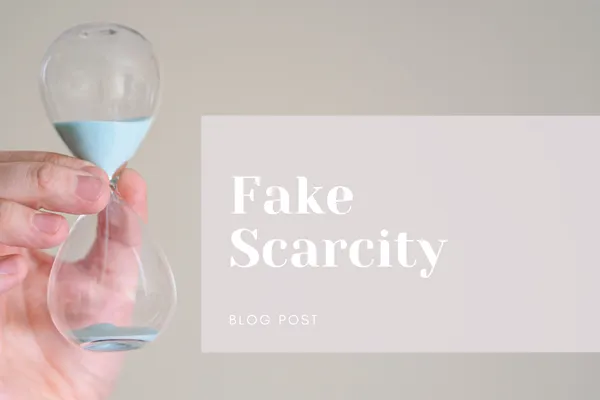
Fake Scarcity: “Only 3 Left!”
When It’s Just Not True
We’ve all been there. You’re scrolling through a website and see the big, bold text: “Only 3 left!” Suddenly, you’re filled with a sense of urgency. If you don’t act now, you’ll miss out, right? But here’s the thing: if those claims aren’t true, it’s not just an annoying sales tactic—it’s a deceptive marketing practice. Let’s unpack why fake scarcity is a problem and how it can hurt both customers and businesses.
What Is Fake Scarcity?
Fake scarcity is when a business creates a false sense of urgency to push people into making quick buying decisions. This can come in different forms, like:
- “Only 3 left in stock!” when there are actually plenty more available.
- Countdown timers that reset the second they run out.
- Claims like “Offer ends tonight!” that mysteriously reappear the next day.
These tactics are designed to make you feel like you’re on the verge of missing out (hello, FOMO) and nudge you into making a purchase without thinking it through.
Why It’s a Problem
While scarcity is a legitimate sales strategy when it’s real, faking it crosses the line. Why? Because it misleads customers and violates trust. Here are a few reasons why fake scarcity is such a big deal:
1. It’s Deceptive: Telling customers there are “only 3 left” when that’s not true is essentially lying. And according to the Federal Trade Commission (FTC), misleading advertising is illegal. Businesses can face fines, lawsuits, and other consequences if caught.
2. It Breaks Trust: Trust is everything in business. If customers catch on that you’re using fake scarcity tactics, they’ll feel duped—and it’s unlikely they’ll shop with you again.
3. It Hurts the Industry: Deceptive practices give online sellers a bad name. Honest businesses have to work twice as hard to earn customer trust when shady tactics like these are so widespread.
The Right Way to Use Scarcity
Scarcity isn’t inherently bad. In fact, it can be a super-effective strategy when it’s used honestly. Here’s how to do it the right way:
1. Be Transparent: If you’re running low on stock, say so! If you’re not, don’t pretend you are. Customers appreciate honesty.
2. Set Real Deadlines: If you’re offering a time-limited deal, make sure it really ends when you say it will. Consistency builds credibility.
3. Highlight Real Demand: Instead of faking scarcity, showcase the popularity of your product. “Over 500 sold this month!” is a great way to show demand without being deceptive.
4. Think Long-Term: Sure, fake scarcity might lead to a few quick sales, but it’s not sustainable. Building a loyal customer base through honesty is a much better strategy.
What You Can Do as a Shopper
If you’re a consumer, it helps to be aware of fake scarcity tactics. Before making a rushed purchase, take a moment to research. Is the claim credible? Does the site have a good reputation? A little digging can save you from falling for the trap.
Final Thoughts
Fake scarcity might get a quick sale, but at what cost? Misleading customers damages trust, invites legal trouble, and hurts the brand in the long run. If you’re a business, keep your scarcity claims real—it’s a win-win for you and your customers. And if you’re a shopper, keep your eyes open for the real deals and steer clear of the too-good-to-be-true tactics. Honest marketing always wins out in the end!
If this article was informative, you don’t want to miss our newsletter. Sign up here.

